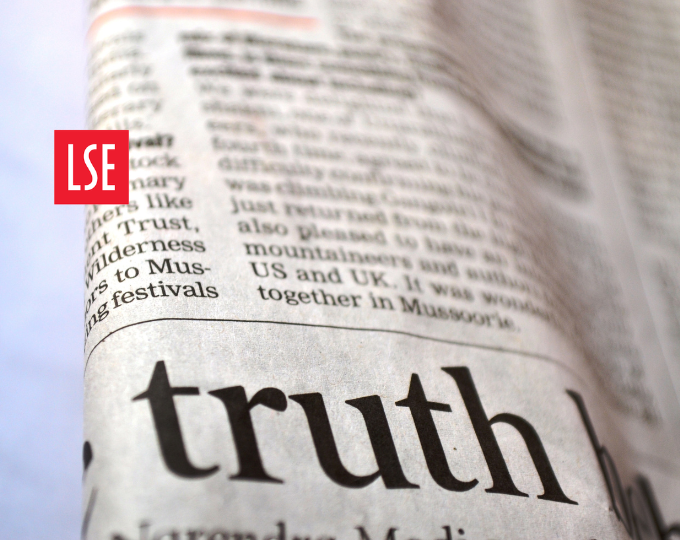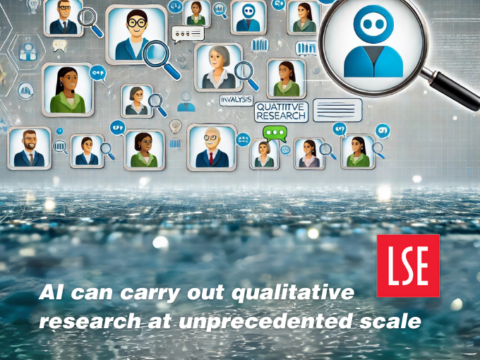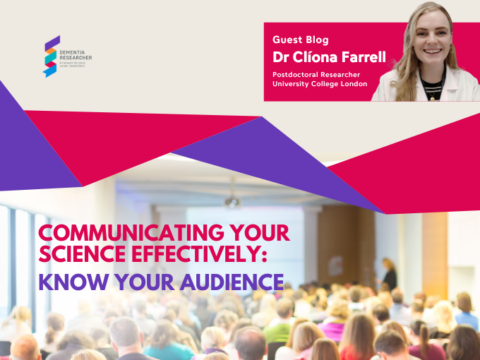
Based on a study of how research is cited in national and local media sources, Andy Tattersall shows how research is often poorly represented in the media and suggests better community standards around linking to original research could improve trust in mainstream media.
This article is shared from the LSE Impact blog the article gives the views and opinions of the authors and does not reflect the views and opinions of the Impact of Social Science blog (the blog), nor of the London School of Economics and Political Science. Shared under the Creative Commons Attribution 3.0 Unported (CC BY 3.0) the orginal publication can be found at https://blogs.lse.ac.uk/impactofsocialsciences/2024/01/08/proper-citation-of-research-by-journalists-is-necessary-for-more-trustworthy-news/
For researchers seeking mainstream attention for their work, the media remains the most effective route. This was increasingly apparent during the COVID-19 pandemic, when an array of social and natural scientists became household names as a result of regular coverage in the media. Research, particularly health research, continues to provide a steady flow of news content to wide audiences. Yet, as I wrote in 2018 much of this coverage often comes without important links to the underlying research, or even details of who authored, published and funded it.
Social media was always hoped to be a means to circumvent mainstream media to reach a general public. However, while this may be true for a small pool of high profile academics, these dynamics often rely on existing relations with traditional media. This hierarchy is likely more entrenched now as social media has fractured and become a more toxic space for many academics. Traditional media therefore remains a vital gatekeeper and amplifier of academic research.
Understanding the often mysterious processes of how research is picked up and used across different sections of the media is therefore important. To do this we looked at a sample of research that included at least one author from the University of Sheffield that had been cited in either national or local media. We obtained the data from Altmetric.com to explore whether the news story included supporting information that linked readers to the research and those behind it. These were links to any of the authors, their institution, the journal or the research funder. We also investigated how much of this research was available via open access.
National news websites were more likely to include a link to the research paper underpinning the news story.
The contrasts between national and local samples were notable. National news websites were more likely to include a link to the research paper underpinning the news story. National research coverage stories were also more organic. They were more likely to be original texts written by journalists who are credited as authors. This is reflected in more idiosyncratic citation practices. Guardian writers, such as Henry Nicholls and George Monbiot, regularly provided a proper academic citation to the research at the end of their articles. This should be standard practice, but it does require those writing press releases to include formatted citations with a link as a basic first step.
Local news coverage followed a different pattern, which is likely due to their use of news agencies to provide stories. Much local news coverage relies on copying and pasting subscription content provided by the UK’s national news agency, PA News. Anyone who has visited their local news website in recent years will know that they are full of pop-ups and hyperlinks to adverts and commercial websites. As a result of this business model, local news stories contain no or very few links to the research and those behind the work. Whether any of this practice and the lack of information stems from academic institution and publisher press releases is debatable.
Much local news coverage relies on copying and pasting subscription content provided by the UK’s national news agency, PA News.
Further, we found that local coverage of research is often syndicated across multiple news sites, belonging to a few publishers. Consequently if a syndication republishes the same information across their news platforms, it replicates bad practice. A solution to this is to include a readily formatted citation with a link, preferably to an open access version, at the foot of the story. This allows local media to continue linking to third party sites whilst providing an option to explore the actual research paper, especially if that paper is open access.
In contrast to our national news sample, local media were more likely to mention the publisher, academic and institution, if not that all important journal paper link. This indirectly supports the theory that local media copy and paste content from the PA newswire as there is the possibility that any links and contact information are scrubbed from the original media releases once shared to local news organisations.
Whilst not all members of the public (and many researchers) may not have the expertise to understand the full breadth of published research beyond the news story; there are many in society who are curious or have a vested interest in doing so. Signposting research and removing barriers to it can only aid the mobilisation of knowledge within society.
We found that to a large extent the media fail to link to open access research, academics, institutions and the funders as part of their reporting. The IPSOS Veracity Index, which explores which professionals we trust, presents a stark contrast between academics and journalists. Scientists usually rate very highly alongside engineers, nurses, doctors and teachers. At the opposite end of the scale are politicians, government ministers and journalists, with fewer than a third of respondents reporting that they trusted the media.
Academics are not the saviours for national and local journalists but a cohesive relationship between the two in how research is covered in the written and online media could help nudge journalists up a few places in the table of trust.
Regardless of whether or not we live in a ‘post-truth world’, fake news jostles for attention with scientific and factual reporting. The media have a responsibility to relate research to society in a evidenced manner. This is hindered, not just by bias and churnalism, but also by the lack of citations and links to the research and those behind it. This is likely to get worse with the use of generative AI to populate websites and rogue news outlets with unevidenced or hallucinated content. Linking to the research, academics and those who fund it could help build greater trust in scientific reporting and journalism as a whole.
In a 24/7 news cycle, journalists are increasingly pressured to turn around more content with less time and resources. They may also be under editorial pressure not to include links, but a readily formatted citation with link to the research could be a step in the right direction. We propose a checklist for academics, press officers and journalists so that they can provide all of the relevant information: most importantly, a link to the paper, preferably an open access version via the publisher or repository.
The media remains an instrumental source of knowledge for society. Underpinning news stories with links to the actual research and those involved in it could help build trust for journalism, support academic impact and foster a more informed society.
Author
Andy Tattersall is an Information Specialist at The School of Health and Related Research (ScHARR) and writes, teaches and gives talks about digital academia, technology, scholarly communications, open research, web and information science, apps, altmetrics, and social media. In particular, their applications for research, teaching, learning, knowledge management and collaboration. Andy received a Senate Award from The University of Sheffield for his pioneering work on MOOCs in 2013 and is a Senior Fellow of the Higher Education Academy.
He is also Chair for the Chartered Institute of Library and Information Professionals – Multi Media and Information Technology Committee. Andy was listed as one of Jisc’s Top Ten Social Media Superstars for 2017 in Higher Education. He has edited a book on altmetrics for Facet Publishing which is aimed at researchers and librarians. He tweets @Andy_Tattersall and his ORCID ID is 0000-0002-2842-9576.
This post draws on the author’s article, “The missing link: the quality of UK local and national online media coverage of research”, Tattersall A and Carroll C, published in Insights.

 Print This Post
Print This Post




